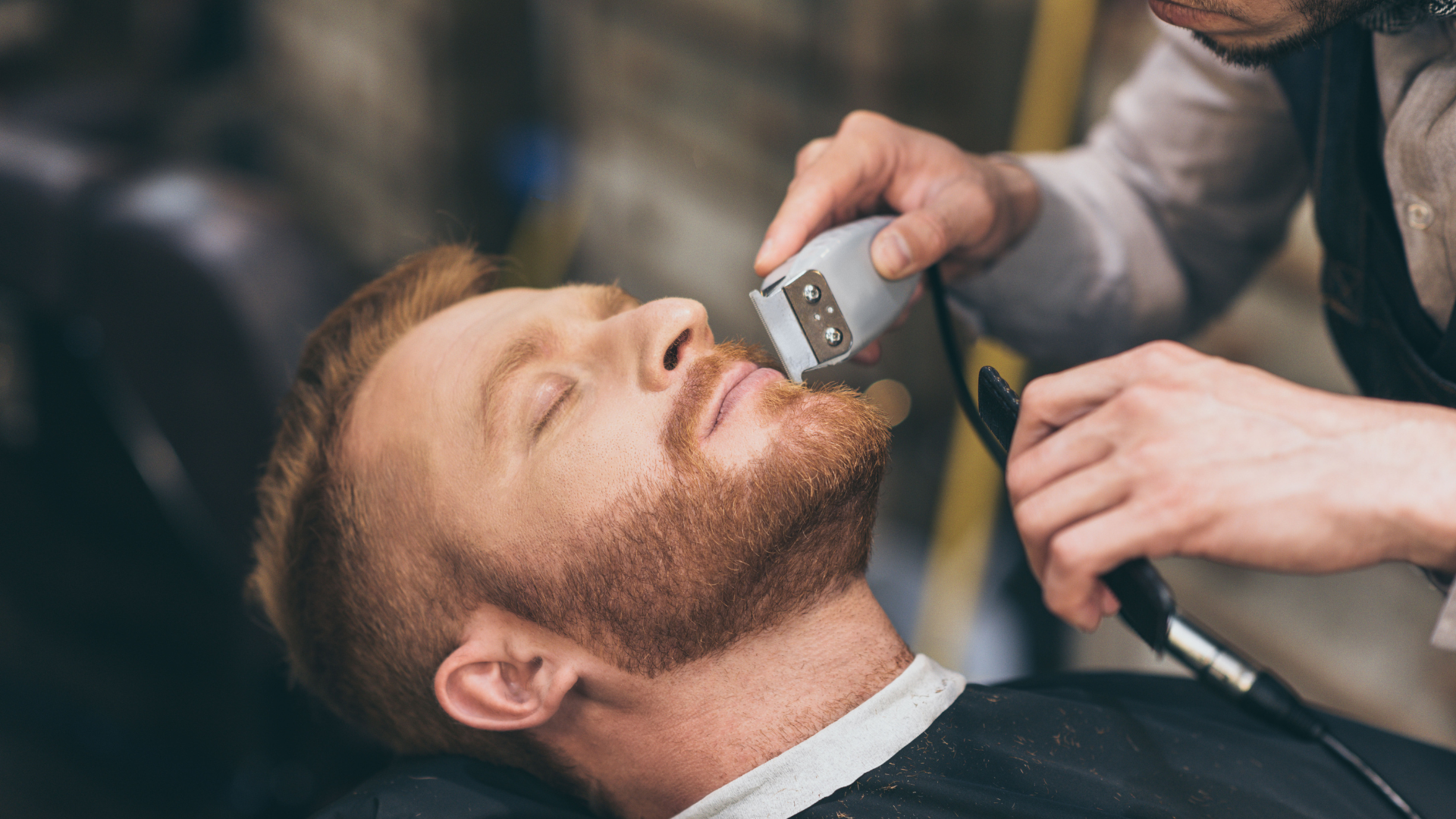A well-trimmed beard can enhance your appearance, but small mistakes can ruin the look. Many men struggle with uneven lengths, patchy spots, or accidental over-trimming. Knowing what to avoid can make a big difference.
1. Trimming a Dry Beard
Trimming a dry beard is one of the most common mistakes that many individuals make, often leading to uneven cuts and an inconsistent overall appearance. When hair is dry, it tends to be less flexible and prone to sticking out in various directions, making it harder to achieve precise trims. On the other hand, wet hair, particularly after a shower or when dampened with a cloth, stretches slightly, giving you a more accurate sense of the desired length and shape.
It’s advisable to start your beard grooming routine after you’ve taken a warm shower or gently moistened your beard with a damp towel. Warm water not only softens the facial hair but also opens up the pores, making the trimming process smoother and more manageable. This preparation allows your trimmer or scissors to glide effortlessly through the hair, minimizing the risk of snags or pulling.
Additionally, trimming a dry beard increases the likelihood of accidentally cutting too much. Without the softness of dampened hair, it’s harder to determine the correct amount to remove, leading to over-trimming in your pursuit of perfection. Over-trimming not only compromises the overall look but can take weeks for your beard to recover. To avoid this mistake, taking the time to properly hydrate and soften your beard is essential. This simple routine step ensures you can achieve an even and refined trim without sacrificing length or the integrity of your beard’s style.
2. Skipping the Comb
Failing to comb your beard before trimming is another common error that can lead to uneven results and an untidy final appearance. Combing your beard before trimming does much more than simply detangle the hair; it helps you identify the natural growth pattern and creates a uniform set of guidelines that ensure a more symmetrical outcome.
When you skip this crucial preparatory step, you might encounter hidden tangles or overlapping hairs that result in uneven cuts. These overlooked issues often lead to patchy spots or an asymmetrical look once the trimming is complete. A simple pass with a high-quality beard comb can work wonders, separating the strands and revealing areas that need attention. It also fluffs out the beard, making sure you achieve an even cut across the different lengths without unintentionally missing sections.
Using a beard comb not only helps in laying a foundation for trimming but also improves your precision as you work around tricky areas like the jawline or the curve of the cheek. Ensuring the hair is neatly aligned, free of tangles, and smoothed out can make the entire experience less stressful and less prone to errors. To perfect your routine, always have a beard comb handy and make it a habit to comb through your beard thoroughly before every trim. This one simple step can elevate your grooming outcome dramatically and give you the polished, professional look you deserve.
3. Using the Wrong Trimmer Guard
One of the most common mistakes when trimming a beard is choosing the wrong trimmer guard. A guard that’s too short can lead to over-trimming, resulting in a beard that looks uneven or even inadvertently altering the desired length and shape of the beard entirely. To avoid this, always begin with a longer guard setting. Starting with a longer guard allows you to trim the beard incrementally, giving you better control over the final appearance. This approach significantly reduces the risk of cutting too much hair at once, which can quickly lead to frustration and even regret. Gradually work your way down to shorter guards only when you’re certain about the length you want.
Additionally, it’s essential to understand that different areas of your face may require different guard lengths. For example, the cheeks generally benefit from a slightly longer guard to maintain fullness, while a shorter guard might be ideal for areas like the jawline or under the chin to create definition. Mastering the selection and use of trimmer guards can completely change your beard grooming experience, ensuring precision and avoiding unfortunate mishaps.
4. Ignoring Neckline and Cheek Lines
Defining your beard’s neckline and cheek lines is crucial for maintaining a clear, professional look—yet these areas are often overlooked or improperly managed. A poorly defined neckline can make even the most well-groomed beard appear sloppy and unkempt. Similarly, neglecting the cheek lines can result in a beard that looks imprecise and uneven, undermining the effort you’ve put into your grooming routine.
To define the neckline, imagine a subtle curve running from just below each ear that meets centrally beneath your chin in the shape of a “U.” Make sure to trim below this line to keep your neck clean, as leaving stray hairs can disrupt the intentional design of your beard. Cheek lines, on the other hand, should follow the natural growth pattern of your beard. However, if your cheek hair grows unevenly or sparsely, you may consider creating a slightly lower, defined line for symmetry.
If tackling neckline or cheek line trimming feels intimidating, there’s no shame in seeking professional help. For a polished look, visiting an experienced barber is a wise choice. A skilled barber in New York or any other city can masterfully shape and refine your lines, ensuring your beard remains sharp and symmetrical while preserving its unique style.
5. Trimming Too Often
While it’s tempting to keep your beard tidy all the time, trimming too frequently can lead to unintended consequences. Over-trimming often slows down the natural growth of your beard, making it harder to achieve the fuller, more balanced look you may be striving for. Additionally, repeated trimming can create uneven patches, especially if you’re inconsistently trimming different sections of your beard.
To allow your beard to grow into its full potential, it’s important to space out your trims. Give your beard ample time between grooming sessions to grow evenly and fully. This not only helps you identify areas that may need more attention but also makes it easier to maintain a consistent shape over time. Typically, trimming every one to two weeks works well for most men; this schedule preserves the beard’s health and appearance without overdoing it.
When in doubt, consult a professional barber who can guide you on the best trimming schedule and technique based on your beard type and growth pattern. By trimming less frequently yet deliberately, you’ll achieve a beard that is not only fuller and healthier but also showcases a more polished and refined style.
6. Not Using Sharp Tools
One of the most common mistakes in beard grooming is attempting to trim with dull tools. Blunt trimmers or scissors can tug and pull at the beard, causing unnecessary discomfort, split ends, and an uneven trim. When the blades aren’t sharp enough, they fail to cut cleanly, leaving behind jagged edges that compromise the overall appearance of the beard. Beyond aesthetics, dull tools can irritate the skin beneath the beard, leading to redness, inflammation, and even ingrown hairs in severe cases. Investing in high-quality trimmers or scissors with sharp, durable blades is crucial for both effectiveness and comfort. It’s equally important to maintain these tools by cleaning and sharpening them regularly. For example, many professional-grade trimmers offer self-sharpening features or specialized blade oil to keep them in pristine working condition. Beard scissors should also be honed every few months to ensure precise cuts. Additionally, replace dull trimmer blades as soon as you notice a loss of sharpness to avoid damage to your beard and skin. Properly cared-for grooming tools not only make the trimming process seamless and effortless but also contribute to the longevity of your equipment.
7. Cutting Against the Grain
Another critical misstep often made is trimming against the direction of hair growth, commonly referred to as cutting against the grain. While it might seem like an efficient way to achieve a uniform length, this approach puts unnecessary stress on both your skin and your beard. When you cut against the grain, you increase the likelihood of irritation, as the clippers or scissors snag and pull the hair in a direction it doesn’t naturally grow. This can lead to redness, bumps, and pronounced sensitivity, particularly for those with coarse or curly hair. Furthermore, trimming against the grain often results in uneven lengths, leaving your beard looking patchy and unkempt instead of polished and smooth.
To avoid these issues, always identify the natural growth direction of your beard. Take time to observe which way the hair flows by running your fingers across your beard before trimming. Work with the direction of hair growth during every step of the process. This ensures a smoother result and creates a more cohesive, natural appearance. For beginners, it may take some practice to master this technique, but the results are well worth the effort. A good rule of thumb is to start trimming one small section at a time, moving deliberately and evenly. Using adjustable-length guards on your trimmer can also help align the cut more consistently with your growth pattern. Over time, adhering to this method will help maintain the integrity of your beard’s texture and ensure a more professional-looking finish.
8. Neglecting Beard Shape
Finally, one of the most overlooked aspects of beard grooming is selecting and maintaining a beard shape that complements your facial structure. Not all beard styles suit every face shape, and neglecting this consideration can result in a look that feels mismatched or unbalanced. For example, a long, angular beard might elongate an already narrow face, while a thick, rounded style may overwhelm smaller or more delicate facial features. Understanding the unique proportions of your face—whether it’s round, square, oval, or heart-shaped—can help you opt for a style that highlights your best features and creates a harmonious balance.
To achieve the perfect shape, consultation with a professional barber is highly recommended. A skilled barber, especially one from a trusted Barbershop in New York, will analyze your face shape, hair type, and personal preferences to craft a beard style tailored specifically to you. They will also ensure the proportions of your beard align with your jawline, cheekbones, and overall silhouette while maintaining symmetry—a vital detail often overlooked during DIY grooming. Barbers can further refine your beard to complement your lifestyle—whether you’re going for a bold, rugged look or a sleek, corporate style. Beyond shaping, they can provide expert advice on how to maintain your beard at home between visits, including recommended trimming techniques, tools, and grooming products. Neglecting the importance of beard shape can lead to an unbalanced appearance, but with professional guidance and attention to detail, you can achieve a well-sculpted beard that enhances your overall look.
By respecting these important aspects of beard grooming—sharp tools, trimming with the grain, and choosing the right shape—you’ll ensure your beard remains a defining and attractive feature.
9. Forgetting to Moisturize
One of the most common yet critical mistakes in beard care is neglecting to moisturize. A dry beard not only looks unkempt but can also become brittle, leading to split ends and breakage over time. Proper hydration is essential, as it keeps both the beard hair and the skin underneath in optimal condition. The lack of moisture often results in itchiness, flakiness, and an overall discomfort that can be easily avoided with the right routine.
Using beard oil or balm is the most effective way to keep your beard soft, smooth, and manageable. Beard oils are specifically designed to penetrate the hair shaft and nourish it from within while also hydrating the skin underneath. They are typically made from natural oils like argan, jojoba, and almond oil, which are excellent for locking in moisture without leaving a greasy residue. On the other hand, beard balms not only moisturize but also provide a light hold, which is particularly useful for taming stray hairs and maintaining a polished look throughout the day.
When incorporating moisturizing products into your routine, timing is key. Applying beard oil or balm after a shower is ideal because the pores are open, and the hair is clean and slightly damp, allowing for better absorption. Warm a few drops of beard oil or a pea-sized amount of balm between your palms and evenly distribute the product throughout your beard, ensuring you reach the roots and the skin underneath. This habit not only improves the condition of your beard but also makes it significantly easier to trim and style. A well-moisturized beard is softer, more pliable, and less prone to snags, allowing for precise and hassle-free grooming.
Neglecting moisturization can turn a simple grooming routine into a frustrating experience, so investing in high-quality products designed for beard care is non-negotiable. Whether you’re maintaining a short scruff or growing out a full, luxurious beard, hydration is the foundation for achieving an impressive and healthy look.
10. Rushing the Process
Perhaps one of the most detrimental mistakes in beard grooming is rushing through the trimming process. While it may be tempting to speed up the task, hasty trimming almost always leads to uneven lengths, unsightly patches, or an unbalanced shape that may take weeks to grow out and correct. Beard grooming is both a science and an art, requiring patience, attention to detail, and the right approach to achieve professional results.
A well-thought-out trimming process begins with preparation. Before picking up your trimmer or scissors, take a moment to evaluate the current state of your beard. Look closely at its length, density, and overall shape to determine the adjustments needed. Stand in front of a well-lit mirror, ideally with a second mirror to check angles from the sides and back, ensuring you maintain symmetry. Rushing into trimming without this initial assessment is one of the primary reasons for crooked lines or over-trimming.
Once you’re ready to start, focus on trimming slowly and deliberately. Always begin with a higher guard setting on your trimmer to avoid accidentally cutting too much hair. Gradually work your way down, checking the length and shape at each stage. This method offers greater control and prevents irreversible mistakes. For the edges and finer details, use a pair of high-quality beard scissors, as these provide precision and allow you to address stray hairs that trimmers may miss.
Another critical factor in achieving professional results is maintaining symmetry. Take the time to assess both sides of your beard frequently throughout the process. A simple tip is to trim in small, even increments, switching sides as you go. This step-by-step approach ensures both sides of your beard remain balanced and prevents over-trimming one side in an attempt to correct the other. Remember, a symmetrical beard is key to achieving a polished and structured appearance.
For those serious about their grooming routine, investing in barber-recommended products can make a dramatic difference. High-quality tools like cordless trimmers with adjustable guards and precision-engineered scissors enable smoother, more accurate trims. Additionally, using specialty grooming products tailored to your beard texture further enhances the final results. Products such as pre-trim oils to soften the hair or post-trim balms to lock in moisture and define the edges add a professional touch to your routine.
Ultimately, beard trim in New York is not a task to be rushed. By slowing down, taking time to plan, and incorporating professional-grade tools and products, you can elevate your grooming routine and achieve a sharp, well-kept beard that commands attention. Patience is not just a virtue—it’s a vital ingredient for consistent and impeccable results.
Final Thoughts
Avoiding these common mistakes can transform beard trimming from a frustrating task into an easy routine. A little patience and the right techniques go a long way in keeping facial hair looking its best.


